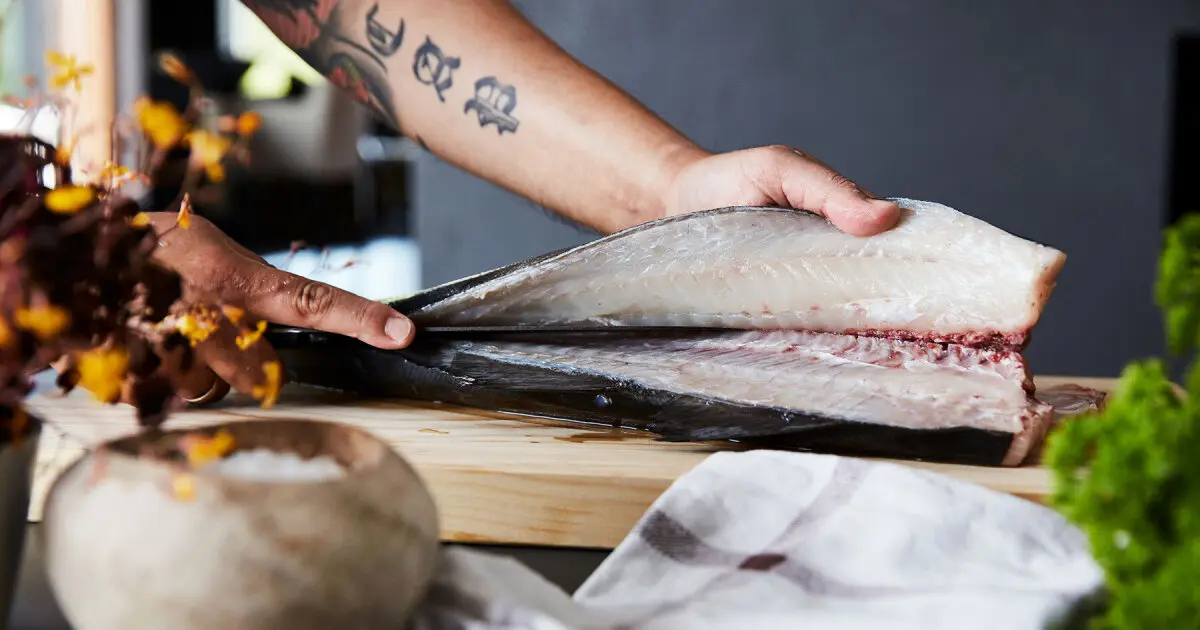Smoked saithe, also known as coley or Atlantic pollock, is a delicious and versatile fish that is often overlooked due to its darker color when raw. However, once cooked, saithe turns a clear white and offers a distinctively rich and fishy flavor that is highly sought after by seafood enthusiasts. In addition to its exceptional taste, saithe is also a healthy choice, packed with protein, vitamin D, vitamin B, and selenium.

What Sets Saithe Apart?
One of the key differences between saithe and other fish, such as pollock, lies in its appearance. Saithe has a straight lateral line and a dark back, which gives it its alternative names of coley or coal fish. On the other hand, pollock, also known as lithe, is larger than saithe and can be distinguished by its sharply curved lateral line and protruding lower jaw.
Preparation and Cooking
Saithe's firm texture makes it easy to handle and cook. It can be prepared in various ways, making it a versatile option for culinary enthusiasts. Its rich fishy flavor makes it perfect for dishes with strong and full flavors, as well as spicy dishes. Saithe is particularly well-suited for deep frying and is an excellent choice for making fishcakes and croquettes.
Despite the initial darker color of its raw flesh, saithe becomes lighter after cooking. Its distinctive flavor and concentrated taste of fish make it a preferred choice for those seeking a rich seafood experience. Moreover, saithe is often more affordable than cod and haddock, making it an economical yet quality option for fish lovers.
Various Names and Distribution
Saithe is sold under different names depending on the region. In the United Kingdom, it is called saithe, coley, or coalfish, while in North America, it is known as Atlantic Pollock. Other names for saithe include Seelachs or Köhler in Germany, czarniak in Poland, saiga or galija in Russia, a palero or bacalao perro in Spanish, and lieu noir or colin noir in French. In Scandinavia, it is referred to as sej or sei, but in Finland, it is known as seiti or kuijan. In Iceland, it is called usfi, and in the Faroe Islands, it is known as upsi.
Saithe can be found in various waters, but the Faroe Islands are particularly known for their saithe fishing. The waters around the Faroe Islands offer excellent conditions for saithe to mature and thrive. Saithe is a shoaling fish, often found in large numbers where there is an abundance of food. Young saithe primarily feed on crustaceans and small fish, while mature saithe prefer krill and small fish like Norwegian pout and blue whiting.
What is the difference between a pollock and a saithe?
The saithe has a straight lateral line, while the pollock has a sharply curved lateral line. Saithe also has a dark back, giving it the alternative names of coley or coal fish.
What is another name for coley?
Saithe is known by several names, including coalfish, coley, and Atlantic pollock.
What does Pollachius virens eat?
Saithe, belonging to the Gadidae family of bony fish, feeds on smaller members of the cod and herring family. Juveniles primarily consume crustaceans and small fish.
Smoked saithe, also known as coley or Atlantic pollock, is a flavorful and versatile fish that offers a rich and fishy taste. Despite its initial darker color when raw, saithe turns a clear white when cooked, making it visually appealing. Its firm texture and distinctive flavor make it an excellent choice for various culinary preparations. Additionally, saithe is a healthy option, packed with essential nutrients. So, next time you're looking for a delicious seafood option, give smoked saithe a try!
If you want to know other articles similar to Delicious smoked saithe: a versatile and flavorful fish you can visit the Seafood category.


Related Articles